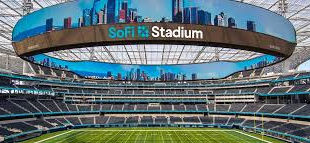

Boeing's Rise and Fall: How it took over the Aviation Industry (Part 1)
Sep 20, 2024
3 min read
4
41
0

We have all flown on a Boeing manufactured plane; most people regularly, if not always fly on a Boeing. A staggering 45% of all commercial flights on a daily basis are operated by a wide variety of Boeing’s planes. In the 1990’s, the American flyers came up with a saying: “If it ain't Boeing, I ain't going”. That shows the incredible power and dominance which the giant possesses in the industry. However things have not been ‘rainbows and butterflies’ for the firm, especially in recent news with articles that are creating a large dent in the company’s reputation and making customers and investors alike fear for the company’s future. How could the once mighty Boeing that dominated the global skies be on the brink of a looming crisis?
The history of Boeing goes back to the early years of aviation, back when the Wright Brothers had first come up with their airplane models. William E. Boeing, a timber merchant, set up Boeing (formerly known as the Boeing Airplane Company) in 1916 with the help of his US Navy officer Conrad Westervelt. During WW2, Boeing had built many of its renowned planes and aircraft which helped tremendously during the war. Some of these aircraft include the B-17 Flying Fortress (1935) and the B-29 Superfortress (1942); its commercial planes included the Model 307 Stratoliner and the Model 314 Flying Boat. Nonetheless, the company still lagged behind many of its commercial airline competitors such as McDonnell Douglas and Lockheed during that time, even though it was successful in selling various military aircraft.
Soon after its military sector success, Boeing won over customers with the 707, one of the most revolutionary passenger aircraft ever built. The aircraft had its first flight in 1957 and was introduced to commercial airlines in 1959. Although it was not the first commercial jetliner in service, the 707 was the first to be widespread and is often credited with beginning what is known as the ‘Jet Age’. In a span of 2 decades, Boeing manufactured more than 800 of these aircraft and major airlines such as PanAM, Air France and Trans World Airlines (TWA) were all regularly operating the type in their fleet.
This laid the foundation for Boeing to become a leader in passenger aircraft and hence why the 707 was quickly followed by the 737 family, arguably Boeing’s most profitable airplane but also one that would haunt them in the future. It was a modern and unique family of planes unlike passengers had experienced before, and by the end of the 20th Century/early 2000’s the 737 had become the world’s best-selling commercial aircraft. Notably, Boeing’s double-decker jumbo plane (the 747 - ‘Queen of the Skies’) made headlines throughout the world for being a marvel of engineering that for many airlines such as PanAM, not only reduced costs by up to 30% but was also fuel-efficient helping those airlines to pack up to 400 people on one plane and increase revenue/profit margins.
At the heart of the organization, Boeing had established itself as an engineering firm where the best engineers in the country came together to assemble the most technologically advanced planes of that time. Managers and the leaders within the organization had a first-hand relationship with the engineering department who were running the show. Many employees from that era described it as a ‘big family that built even larger planes’.
That philosophy however, would soon change as a turbulent future lay ahead for the company.





